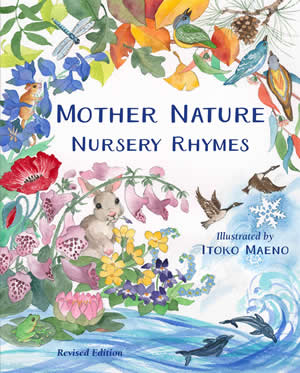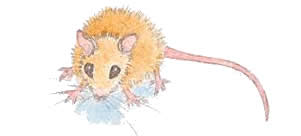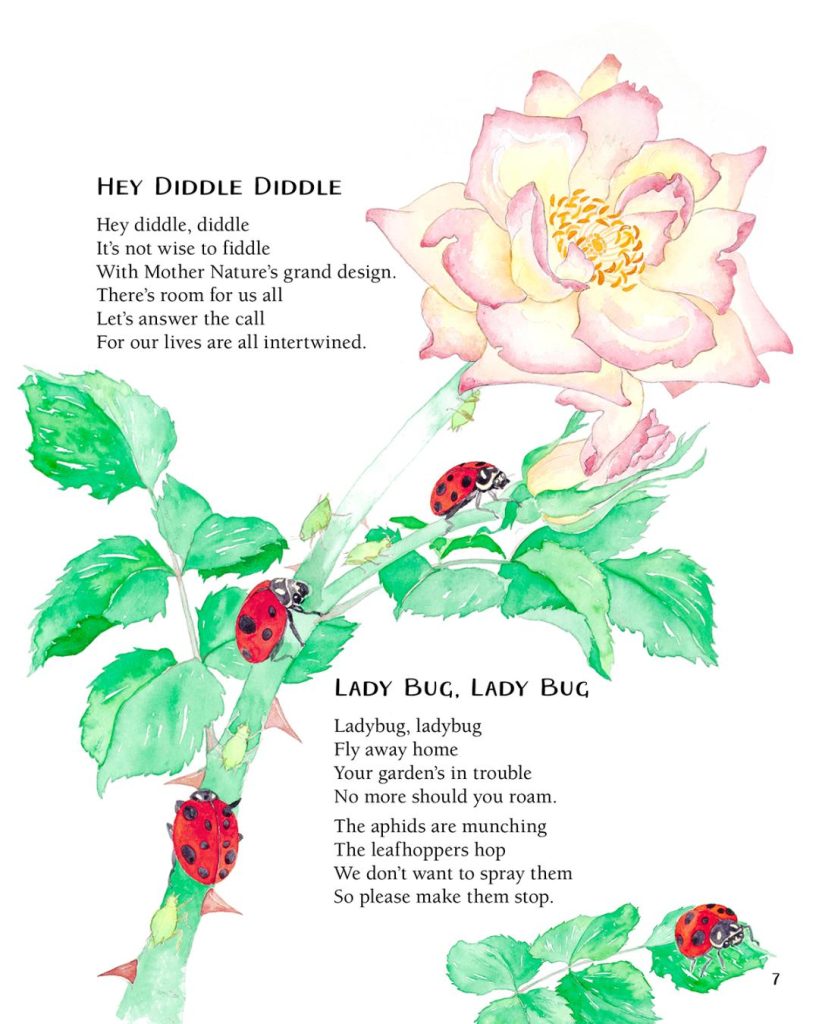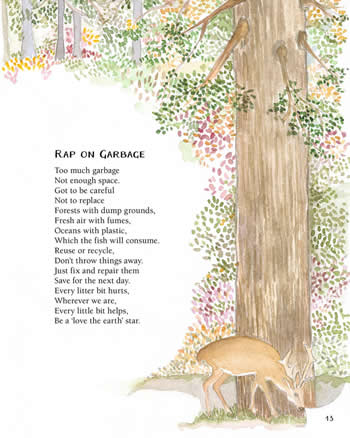
Short Description
Mother Nature Nursery Rhymes is a wonderful way to begin teaching children about the natural wonders they will inherit.
Newly revised to reflect important environmental aspects of today’s eco messages, this beautifully written and fully illustrated picture book will initiate a healthy respect and appreciation of our planet.
Long description
Mother Nature Nursery Rhymes is a wonderful way to begin teaching children about the natural wonders they will inherit. Newly revised to reflect important environmental aspects of today’s eco messages, this beautifully written and fully illustrated picture book will initiate a respect and appreciation of our planet and encourage environmental actions and an awareness in both children and adults.
The rhymes carry the sing-song cadence and whimsy that help language development for kids ages 1-5. The illustrations depict wildlife and plants, and all the nursery rhyme favorites from tiny lady bugs to enormous elephants.
At the end of the book, there is a Rhyme Time Quiz and resources of places to visit online and in person to help parents and other caregivers enhance this early learning phase. More than ever, it is important to instill a love of nature in the minds of those who will ultimately decide her fate.
Biographies
Social entrepreneur and author, Mindy’s titles have sold over two and a half million copies worldwide. She is the recipient of numerous national, regional, and local awards including a Certificate of Special Congressional Recognition for Innovative Approaches to Curricula by the United States Congress.
Creator and award-winning author of sixteen children’s titles and a book shepherd and art director for many more, Penny holds a Fine Arts degree from Goldsmiths College, London. She moved to California in 1972 and worked for Girls Incorporated and as an independent state and national career education consultant.
Sandra Stryker
Former Minnesota journalist, Sandy Stryker is the author, co-author, and editor of eighteen children’s and young adult titles. Her children’s picture book Tonia the Tree was awarded the Friends of American Writers Juvenile Book Merit Award and her work with the ground- breaking “Choices” series was recognized by many women’s and educational programs.
A celebrated water colorist, Itoko has been a Teaching Artist with the Santa Barbara Museum of Art for over twenty years. She has also illustrated more than twenty picture books. Four of these have won national awards. My Way Sally, by Mindy Bingham and Penelope Paine, received the Benjamin Franklin Award for Best Picture Book. A world traveler, Itoko’s international flair, attention to detail, and sense of fun add special charm to her work.
Fact Sheet
Mother Nature Nursery Rhymes
by Mindy Bingham, Penelope Colville Paine, and Sandy Stryker
FACT SHEET
CATEGORY: JUVENILE FICTION
BISAC CODES
JUV055000 JUVENILE FICTION / Nursery Rhymes
JUV029010 JUVENILE FICTION / Science & Nature / Environment
JUV029000 JUVENILE FICTION / Science & Nature / General
Title: Mother Nature Nursery Rhymes
Authors: Mindy Bingham, Penelope Colville Paine, and Sandy Stryker
Format: Hardcover
Size: 8 x 10
Pages: 32 (four-color, fully illustrated)
ISBN: 978-0-9707944-9-9 (hardcover)
The Paper Posie Publishing Company
315A Meigs Road #167
Santa Barbara, CA 93109
(800) 360-1761
Website: www.mothernaturenurseryrhymes.com
Publicity Contact
Gail M. Kearns
825 E. Pedregosa Street, Suite 2
Santa Barbara, CA 93103
805-570-8275
TALKING POINTS
8 Ways to Instill a Love of Nature in Children
Children who spend time in nature on a regular basis are shown to become better stewards of the environment. Because children are our future, it’s important to teach them about the environment at an early age because these lessons will become their normal. Here are eight out of countless ways to encourage kids to connect with nature.
- Let children play outdoors where imagination is fertile ground. Children who play outside are more physically active, more creative in their play, and show better concentration.
- Embrace a new outdoor activity such as camping, bird watching, or catching fireflies.
- Take walks in nature. Bring along a backpack or tote with things like a journal, magnifying glass, binoculars, compass, etc.
- Study nature. Look at birds, squirrels, or other animals through binoculars. Collect river rocks, climb a tree. Close your eyes and listen. What do you hear?
- Craft something using items found in nature. Paint rocks for the garden, make a hanging mobile, or create a nature boat and float it down the river.
- Plant a garden and let kids help pick the fruits of their labor. Give them their own set of gardening tools and even a small space they oversee. Let them choose their own seeds.
- Adopt a pet. Providing children with the opportunity to feed an animal and treat “creatures” gently supports a sense of respecting nature and develops empathy.
- Read books about nature. There are many amazing books about nature, including Mother Nature Nursery Rhymes. Help instill a love of reading along with a love of nature by getting lost in some great nature-inspired books.
Q&A with the Authors of Mother Nature Nursery Rhymes
What are five key things parents and caregivers can do to encourage respect and a love of nature in children, as well as nurture our environment?
Help children become aware of nature by renewing your own acquaintance with the physical world. Take time to smell the flowers, listen to the birds, admire the trees, and watch the fireflies. Teach them to use all their senses (sight, touch, hearing, smell, and taste) when exploring the natural world.
Take trips to the farmer’s market in your area to discuss food and where it comes from, who produces it, and how it gets to grocery stores. Take your own reusable bags. Read product labels in the supermarket and, when possible, choose food that is responsibly grown and locally produced.
Visit local botanical and public gardens, science museums, maritime museums, zoological gardens, nature reserves, animal sanctuaries, and national forests and parks.
Ask young children to help recycle plastic, glass, metal, and paper at home and when you are out.
If in doubt about an action or situation, remember to ask, “What would Mother Nature do?”
Why did you create Mother Nature Nursery Rhymes?
Thirty-three years ago, the world started to hear about the possible environmental disasters if humans did not consider the destruction of our habitat, and water and air pollution. We were all working for a small non-profit press in Santa Barbara, California, and had already published Father Gander Nursery Rhymes by Doug Larche, which adapted traditional rhymes to reflect new diverse messages and illustrations.
Having heard the predictions and warnings about the environment, nature, and all living things we decided it was time to call in Mother Nature to help with another version of nursery rhymes. We hoped our rhymes would cultivate in children a love of nature that will stick with them and, soon enough, the meaning would come through. As the saying goes, lessons learned in the nursery are lessons learned for life.
Can small children understand nursery rhymes?
Most nursery rhymes have been around for nearly three hundred years, and versions are found in different countries and languages. Traditional rhymes don’t always make much sense to adults, let alone children. The words used often referred to events of the day; some were political, some quite brutal, and others challenged society, taxes, rumors, and so forth. A little like Twitter today they were commentaries and opinions. Handed down throughout the years we still hear and remember rhymes, the tune, even the person who sang them, and we remember the hand actions, alliteration, the cadence, and the word rhyme. Little children will continue to do the same again and again, and, if the rhymes make sense, all the better.
Are nursery rhymes important?
Research shows that rhymes help young children develop early language and literacy skills. Hearing repeated and rhyming words helps children make sounds and build their own vocabulary, and rhymes teach children that stories have a beginning, a middle, and an end. Most important, they help children develop their imaginations.
Why revise the old rhymes, why not just write new rhymes?
Nursery Rhymes have been revised, cleaned up, and adapted over the years. In 1744, one of the first collections was called Tommy Thumbs Songs, many followed along, and when the rhymes came to America some years later Mother Goose took over and became a popular theme. Father Gander showed up in the 1970s and added his versions, and today collections of all sorts of rhymes are often referred to as a treasury of rhymes, and they are. We chose to include some traditional rhyme rewrites with an updated nature theme and even some updates of our own original revisions, plus some brand-new nature rhymes.

What else can parents do to help their children develop a love of nature?
We offer ideas and resources for parents and caregivers on pages 28-31 of the book. Go to the Park, a rhyme on page 30, lists simple and fun actions that embrace nature. Of course, there are lots more things kids can see and do at the beach, in a garden, or on a camping trip, etc. Have fun making a rhyme with your child about their favorite things to do and observe in nature. Use Rap on Garbage and Go to the Park as inspiration.
Rap on Garbage
Too much garbage
Not enough space.
Got to be careful
Not to replace
Forests with dump grounds,
Fresh air with fumes,
Oceans with plastic
Which the fish will consume.
Reuse or recycle,
Don’t throw things away.
Fix or repair them
Save for the next day.
Every litter bit hurts,
Wherever we are,
Every little bit helps,
Be a ‘love the earth’ star.
Go to the Park
Go to the park
Look at the sky
Eat an orange
Watch a fly.
Draw in the sand
Peer through the fog
Run through the leaves
Sit on a log.
Pick up twigs
Blow bubbles up high
Walk by the stream
Make a mud pie.
Splash in a puddle
Play under the trees
Smell the flowers
Listen to the bees.
Climb up a hill
Roll down a slope
Ride a bike
Jump with a rope.
Paint a picture
Play with the cat
Sing lots of songs
Wear a sun hat.
Feel the rain
Find stars in the dark
Count all the birds
Let’s go back to the park.






